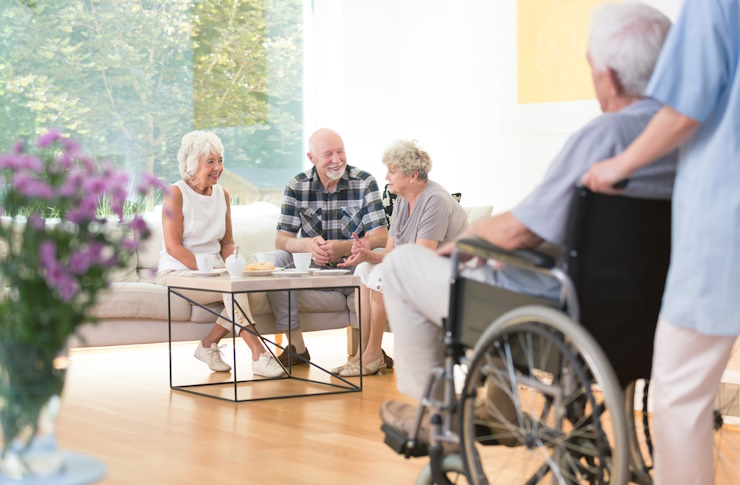Understanding How to Choose the Right One-Bedroom Senior Apartment
Choosing a one-bedroom senior apartment involves more than square footage—it’s about comfort, design, and daily ease of living. This guide outlines how elements like accessibility, lighting, kitchen layout, and safety features support independent lifestyles. It also explores how affordability programs are structured and how different housing types compare in amenities and long-term value.

Choosing the right one-bedroom senior apartment is a significant decision that impacts daily comfort, social connections, and financial well-being. As seniors transition from larger homes to more manageable living spaces, understanding the various housing options and their associated costs becomes crucial for making an informed choice.
What Makes Affordable Senior Living Options Attractive
Affordable senior living encompasses various housing models designed to meet different income levels and care needs. These communities typically offer reduced rent based on income qualifications, making them accessible to seniors on fixed budgets. Many affordable options include basic utilities, maintenance services, and sometimes meal programs, which can significantly reduce monthly expenses compared to independent living arrangements.
The appeal of affordable senior living extends beyond cost savings. These communities often foster social connections through organized activities, shared common areas, and transportation services to local amenities. Residents frequently report improved quality of life due to reduced isolation and increased access to age-appropriate programming.
How HUD Senior Housing Programs Support Older Adults
HUD senior housing programs, particularly the Section 202 Supportive Housing for the Elderly program, provide crucial assistance for low-income seniors aged 62 and older [1]. This federal program develops affordable rental housing specifically designed for elderly residents, often featuring accessibility modifications and supportive services.
Section 202 properties typically offer one-bedroom apartments with features like grab bars, wheelchair accessibility, and emergency call systems. The program also funds service coordinators who help residents access healthcare, transportation, and other community resources. Eligibility requires meeting age and income requirements, with rent typically set at 30% of the resident’s adjusted monthly income.
Finding Low Income Apartments for Seniors
Low income apartments for seniors are available through various programs beyond HUD, including state and local housing authorities, nonprofit organizations, and private developers who participate in tax credit programs. These apartments often have waiting lists, so early application is essential.
When searching for low income senior apartments, consider factors such as proximity to healthcare facilities, public transportation access, and nearby shopping centers. Many properties offer income-based rent calculations, where residents pay a percentage of their monthly income rather than a fixed amount. This sliding scale approach ensures housing remains affordable even if income fluctuates.
Essential Senior Apartment Amenities to Consider
Senior apartment amenities vary significantly between properties, but certain features enhance safety, comfort, and social engagement. Basic amenities often include laundry facilities, community rooms, and outdoor spaces for recreation. More comprehensive communities may offer fitness centers, libraries, computer labs, and organized social activities.
Safety features are particularly important in senior apartments. Look for properties with secure entry systems, well-lit walkways, emergency call systems in units, and grab bars in bathrooms. Some communities also provide transportation services for medical appointments and shopping trips, which can be invaluable for seniors who no longer drive.
Cost Comparison of Senior Housing Options
Understanding the financial landscape of senior housing helps in making informed decisions. The following table provides estimated cost ranges for different types of one-bedroom senior apartments:
| Housing Type | Provider Examples | Monthly Cost Range |
|---|---|---|
| HUD Section 202 | Local Housing Authorities | $300-$800 |
| Low Income Tax Credit | Affordable Housing Partners | $400-$1,200 |
| Market Rate Senior Living | Brookdale, Sunrise Senior Living | $1,500-$4,000 |
| Independent Living Communities | Holiday Retirement, Del Webb | $2,000-$5,000 |
Prices, rates, or cost estimates mentioned in this article are based on the latest available information but may change over time. Independent research is advised before making financial decisions.
Making the Final Decision
Selecting the right one-bedroom senior apartment involves balancing personal preferences, financial constraints, and future care needs. Visit multiple properties, speak with current residents, and carefully review lease agreements and fee structures. Consider the long-term implications of your choice, including potential changes in health status or financial circumstances.
Remember that the best senior apartment is one that supports your lifestyle goals while remaining financially sustainable. Take time to thoroughly research options, apply early to properties with waiting lists, and don’t hesitate to ask questions about services, policies, and additional costs that may not be immediately apparent.
Sources
- [1] https://www.hud.gov/program_offices/housing/mfh/progdesc/eld202




